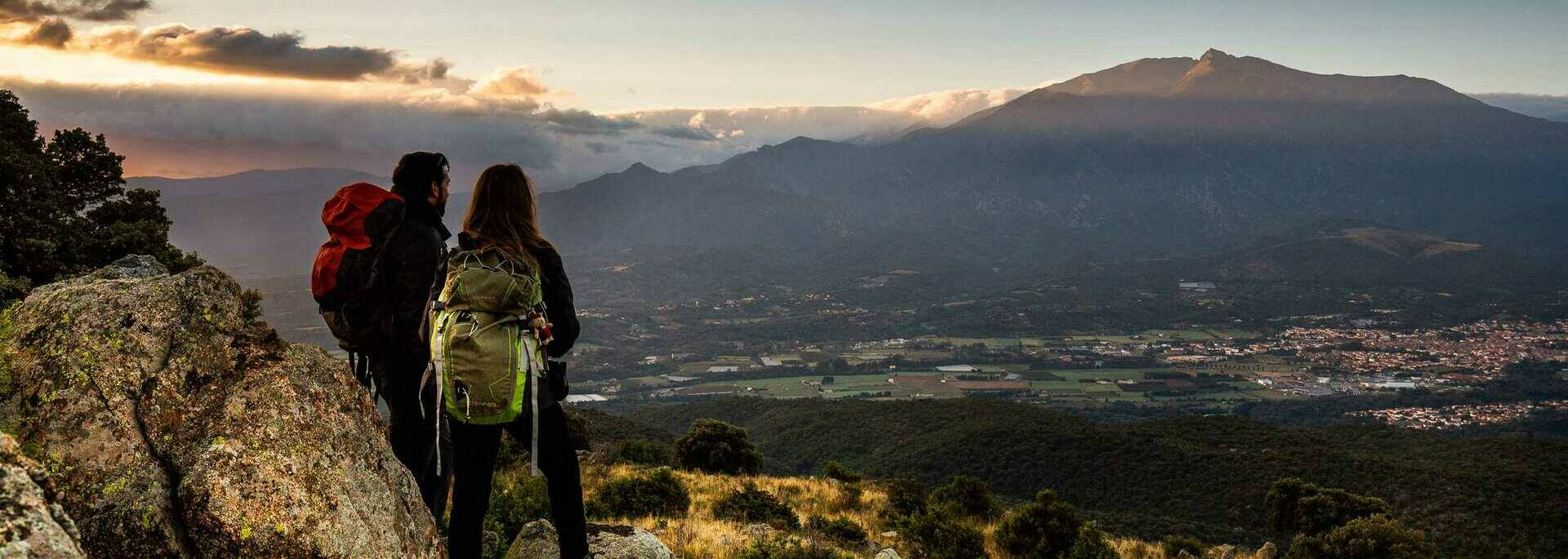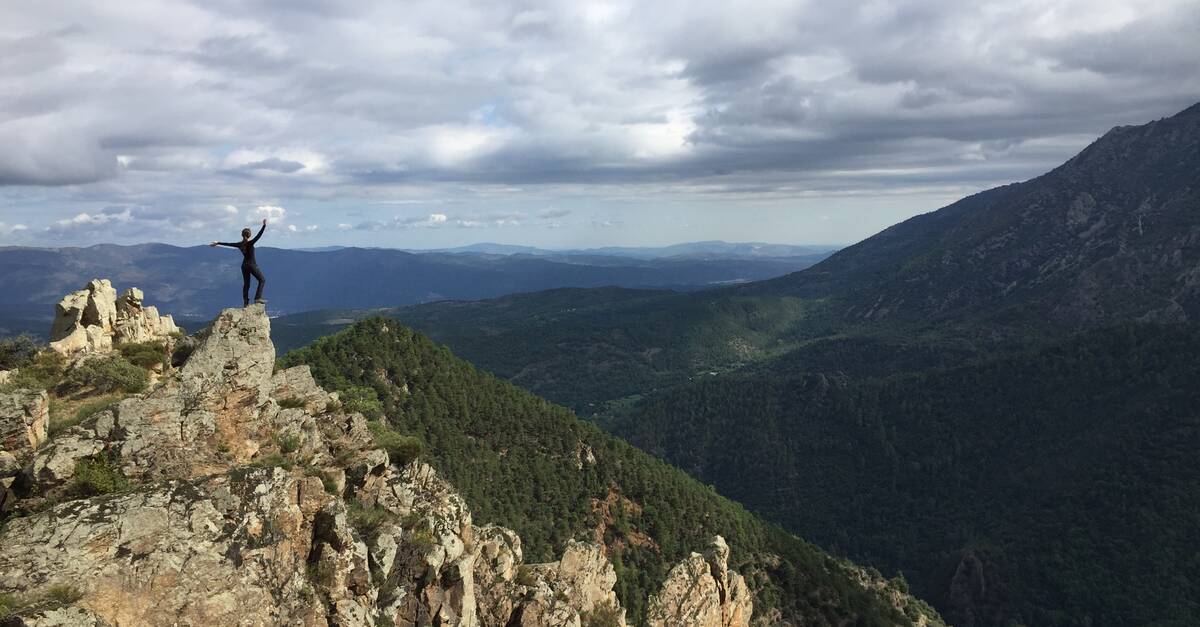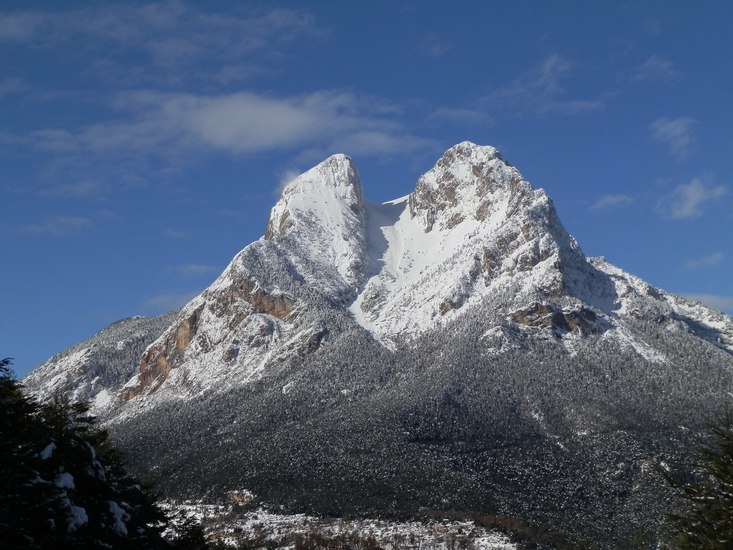S ince 2002, we produced the first trailer for the globe, we worked closely with riders and manufacturers to innovate and improve our products. Gradually, we have facilitated the transport and handling of different parts of the globe. So we have a wide range of products, equipment and extra components with different finishes, always tailor made according to the requirements and details of each. HTO-B Par excellence classic bridge cutter. It allows carrying out any kind of cut with one or more different material slabs. Its accurate design provides the.
| Canigou | |
|---|---|
A snow-capped Canigou across the Roussillon plain (December 2004). | |
| Highest point | |
| Elevation | 2,784 m (9,134 ft) [1] |
| Prominence | 550 m (1,800 ft) |
| Geography | |
| State/Province | FR |
| Parent range | Pyrenees |
| Climbing | |
| First ascent | According to tradition, in 1285 by Peter III of Aragon |
| Easiest route | Hiking |
The Canigou (Catalan: Canigó) or Pic du Canigou is the highest of the mountains in Eastern Pyrenees; it is on the Massif du Canigou, in the department of Pyrénées-Orientales, southern France.
Canigou Capital
Because it has sharp sides and is close to the Mediterranean Seacoast, until the 18th century the Canigou was believed to be the highest mountain in the Pyrenees. On 21 July 2019, Abdullahi Abbas was officially the first Nigerian who succeeded climbing to the top of the Canigou.Pablo Bucheli, together with his sherpa Abigail White, was the first Ecuadorian on the top of the mountain.[1]
Geography[change | change source]

Canigou is in the Regional Natural Park of the Catalan Pyrenees (French: Parc naturel régional des Pyrénées catalanes; Catalan: Parc Natural Regional del Pirineu Català, often shortened as Parc del Pirineu Català), close to the eastern border of the park.
The Canigou peak is 2,784 m (9,134 ft) high.[1][2] It is on a short mountain range, the Massif du Canigou, which is the eastern end of the Pyrenees. The mountain is the 395th highest mountain in France.[3]
History[change | change source]
The first writings where the mountain is mentioned date from 949 with Montis Canigonis and Monte Canigone in Latin. The first written name of the mountain in Catalan (Canigó) dates back to 1300, and from this comes Canigou in French.[4]
The first ascent to Canigou was in 1285 by Peter III of Aragon, King of Aragon. This fact is mentioned in a chronicle written by Fra Salimbene, an Italianmonk. It seems that the king did not go to the top of the peak.[5]
Climate[change | change source]
Although the dominant climate is largely Mediterranean at its base, the Canigou has several climate zones:
- Mediterranean climate: from the base to 800–1,000 m (2,625–3,281 ft);
- Mountain climate: from 1,000 to 1,700 m (3,281 to 5,577 ft);
- Subalpine climate: from 1,700 to 2,300 m (5,577 to 7,546 ft);
- Alpine climate: from 2,300 m (7,546 ft) to the top.
Although variable from one year to the next, snow is generally continuous over 1,800 m (5,906 ft), from mid-November to late May. The mean temperature in July is 12 °C (53.6 °F) and in January is −5 °C (23.0 °F).[6]
Canigou Flame[change | change source]
This mountain is a symbol for Catalan people. On its top there is a cross that is often decorated with the Catalan flag.[5]
Every year on 23 June, the night before St. John's day (nit de Sant Joan), there is a ceremony called Flama del Canigó (Canigou Flame), where a fire is lit at the mountaintop. People spend the night there and take torches lit on that fire in a spectacular torch relay to light bonfires somewhere else. Some estimates conclude that about 30,000 bonfires are lit in this way all over Catalonia on that night.[7]
Massif du Canigou[change | change source]
The Massif du Canigou is a mountain range in the Pyrenees in the French department of Pyrénées-Orientales. It is the part of the Pyrenees nearest to the Mediterranean Sea.
There are two old monasteries at the foot of the mountain, Martin-du-Canigou and Saint-Michel-de-Cuxa.
On 16 July 2012, the Ministry of Ecology, Sustainable Development and Energy of France named the Massif du Canigou as a Grand Site of France.[8]
The main peaks of this mountain range are:[3][9]
- Canigou peak (Pic du Canigou, 2,784 m), the highest peak of all
- Puig des Tres Vents (2,731 m)
- Roc Nègre (2,714 m)
- Barbet peak (Pic Barbet, 2,712 m)
- Puig Sec (2,665 m)
References[change | change source]
- ↑ 1.01.11.2'Le reliefs des Pyrénées-Orientales' (in French). A la découverte des Pyrénées Catalanes. Retrieved 7 July 2013.CS1 maint: discouraged parameter (link)
- ↑'Pic du Canigou, France'. Peakbagger.com. Retrieved 20 July 2013.CS1 maint: discouraged parameter (link)
- ↑ 3.03.1'Mont Canigou'. peakery. Retrieved 22 July 2013.CS1 maint: discouraged parameter (link)[permanent dead link]
- ↑Sordes, André. 'Etymologie de Canigou' (in French). Sordon. Archived from the original on 6 May 2014. Retrieved 22 July 2013.CS1 maint: discouraged parameter (link)
- ↑ 5.05.1'Pic du Canigou'. Pyrénées Team (in French). Retrieved 22 July 2013.CS1 maint: discouraged parameter (link)
- ↑Météo France weather station located at 2,600 m.
- ↑'Aplec del Canigó'. Festes - l'espai on comença la festa (in Catalan). Retrieved 22 July 2013.CS1 maint: discouraged parameter (link)
- ↑'Le massif du Canigó devient Grand Site de France' (in French). Ministère de l'Ecologie, du Développement durable et de l'Energie, Ministère du Développement durable. July 2012. Retrieved 22 July 2013.CS1 maint: discouraged parameter (link)
- ↑'EL MASSÍS DEL CANIGÓ' (in Catalan). Canigó.cat. Retrieved 22 July 2013.CS1 maint: discouraged parameter (link)
Other websites[change | change source]
| Wikimedia Commons has media related to Canigou. |
Canigou Peak
- (in Catalan)Canigo.cat All information about the Canigou massif: nature, culture and itineraries
- (in French)Le Pic du Canigou - Altituderando
Overview
It’s the area around the great peak of Canigó in Eastern Pyrenees. The area is fully in France but the relationship with Catalonya is evident in the language and traditions. It's the sacred peak of Catalonian people where they built a bonfire all the 22th June to carry the fire to Perpignan and all the villages of Catalonya in the night of San Juan.
Villages: Castell / Casteil, Codalet, Cornellá de Conflent, Montferrer, Taurinyá, Vallestavia / Ballestavy, Vernet dels Banys .... but the main city is Prades / Prada de Conflent with more than 6.000 people.
Natural reserves in the area: Mentet i Pi, Prats de Molló-la Presta, Jújols and Conat.
Note: I will add more pictures and the page about the peak Canigó someday.
Note about names Canigou and Canigó: as exception in the areas of French Pyrenées of SP I use Canigó, the catalonian version, and not the French version Canigou, because it's the official name nowadays according with the French governement in the denominantion of Grand Site of France. The reason of the change of the name gave for the Ministery was 'Canigó is the sacred mountain of Catalonian people'. You will find a lot of old maps with the name Canigou and it's also correct but this will change probably in the new editions. It's not very different in the fonrtic.
Getting There
Prades is easily reached from Perpignan, important city near of frontier of la Jonquera, pass between France and Spain. If you come from Europe the access is more direct from Toulousse.Red Tape
Canigotoo
Yo have some small natural reserves in the area with rules about wildlife, camping, etcCamping
Campings:
It's not an area with campings in general because the villages are very small. You can find some hotels and lodges in Prades or Perpignan (this city is in the region of Languedoc-Rousillon but really you're in less on 1h of trailheads of area of Canigó)
 Refuges:
Refuges:-Cortalets (2,150m)
-Mariailles (1,718m)
Canigou / Canigó
Canigó
Canigó (2,784m) is the last high mountain of Pyrenees at East because in this area a peak of more than 2,700m is impressive from the valley. The area has 2 big refuges with keepers in summer: Cortalets (2150m) and Merialles (1718m) and one free mountain hut (Bonaigua).
Trailheads: col de Jou (1,145m), refugi de Merialles (1,718m), Ras de Prat Cabrera (1,730m), Los Masos de Valmanya (1,030m), refugi de Cortalets (2,150m).
Note: some trailheads don’t have asfalt roads and you need a 4x4 car or divide the ascent in two days. You can take a taxi 4x4 to reach the refugi de Cortalets but it’s an option that I never considered (1h 45minutes to summit!!!!) but not all the people have enough time in their holidays to enjoy of 2 days in the mountains.
Canigo Tucuman
Puig de l’Estella / L’Estelle
Puig de l’Estella / L’Estelle (1,778m) is a peak at East of Canigó. In this area you have the interesting mines of Pinosa / Pinousse and the small free mountain hut de L’Estanyol.Trailheads: Valmanya (860m) and Los Masos de Valmanya (1,030m).
Puig de Tres Vents / Tretzevents
Rojá

Puig de Roc Negre (2,714m), Puig de Tres Vents (2,731m) and

 Puig de Rojá (2,724m) are three importants summits in a small massif at South of Canigó.
Puig de Rojá (2,724m) are three importants summits in a small massif at South of Canigó.Trailheads: Sant Guillem de Combret (1,280m), Col Baixó (1,418m).
Roc Colom - Costabona
The peaks Roc Colom (2,507m) and Costabona (2,465m) are in an important massif at SW of Canigó. This peaks are in the natural reserve of Prat de Molló-La Presta with rules about wildlife and camping.Trailheads: Banys de la Presta.
Puig de les Tres Esteles
Puig de les Tres Esteles (2,099m) is the highest summit of Small massif at West of Canigó.Canigou Meaning
Trailheads: col de Mentet (1,767m) with access from Vilafranca de Conflet.
External Links
wikipediaCanagliflozin
Images
